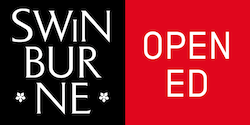The Ultimate Guide to Writing an Engaging Professional Bio

It’s notoriously difficult to describe yourself to other people, and it’s even harder when you need to write a professional profile.
Whether you’re writing one up for LinkedIn, or doing it for your company team page, it’s a skill that pretty much anyone needs no matter what position they’re in. Here are some steps to follow when you need to make an overall good impression on anyone who comes across your social media.
How long should your bio be?
That really depends on your intended audience and where you’re publishing it. If you’re writing up an author bio or doing your part in a company’s ‘about us’ page, you’d want a short bio, a few sentences at most. A longer bio would be more suitable for a personal website, considering it needs to be more extensive.
As long as you have enough words to explain briefly who you are in a professional context and what you offer, you should be good. Again, there aren’t any real rules as long as you can keep the reader’s interest, but usually the fewer words the better. If you’d like a rough guide, a short bio should be around 150-500 words, and a long one can hit up to 2,000. Again, it’s whatever you think is appropriate for your situation.
How should you introduce yourself then?
Once you figure out the length of your bio (or you’ve already been given one by your boss), you may wonder where you should start. Well, that’s actually the easy part: you should always start off with your name. No matter how long you decide to make your professional bio, the important details that you need to include generally stay the same. Your job title, industry, qualifications and where you’re situated should definitely be included in the first couple of sentences. Of course, you should also add a photo of yourself and contact information along with it.
‘Okay, what now?’ General tips for writing up your bio
Now, the key to any good bio is to write professionally but not to the point where you’re just another faceless drone. Remember that your bio is what potential clients first see, and you have to convince them as to why you’re the person for the job. You want to make yourself stand out, and one of the best ways to stand out is to act more like a human than some institution.
Writing it as a story
A common pitfall when people first write their bio is they tend to list all of their details in a very boring and monotonous way. As I said before, you want your readers to be engaged with what you’re saying, so if you’ve got a flair for creative writing, then go for it!
Most professional bios are written in the third person, though there’s nothing stopping you from writing in the first person if you feel that’ll work better for you. Although, I must say personally, there are more benefits to writing in the third person, since it’s much easier to outline all of your achievements, and people can share your bio without any confusion as to who it’s about.
Even if you’re not much of a writer, little tweaks such as using a more active voice and adding your hobbies can elevate your bio. For example, here’s what you might see:
“I try to help as many people as I can with my prior experience.”
Do you see what’s wrong here? It sounds too weak! It gives off the impression that you’re unsure of yourself, which isn’t exactly what potential clients want to see. Here’s a better example:
“(insert your name here) is the founder of (insert company name here) committed to helping people in (your industry)”
See how that packs more of a punch? Again, this is a pretty standard example, so this might not be the direction you want to take. Keep in mind though, that you want to remain professional. You can definitely take it too far and make it too casual in your pursuit to be creative. This is the time to ask someone for their feedback, and figure out what you can do to keep that balance between professionalism and creativity.
So, just to emphasise what you need to include, here’s a quick checklist. Remember to weave these elements in, rather than just plonking them down in a list-based format:
- Qualifications (e.g.: education, experience, etc)
- Any awards you’ve received
- Your current position
- Location and phone number
- Your Photo
- Interests (optional)
- What sets you apart from your competitors
The final touches
Since you want to maintain your professionalism, make sure to go over your bio and see if there are any spelling or grammatical errors. Once you’re done going over it, get someone else to read through it and fix any technical issues they may pick up.
And when that’s all done and dusted, you’re pretty much ready to publish it and announce who you are to the working world.










